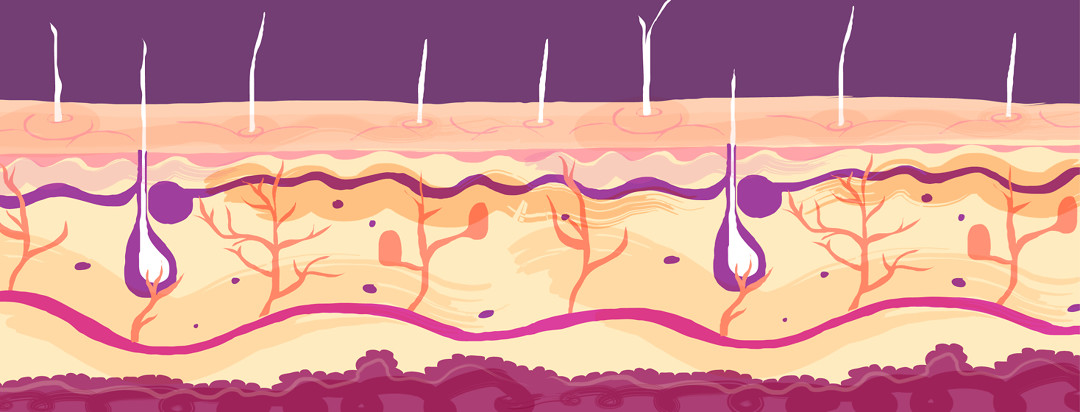So What Exactly is Filaggrin and What Does it Do?
There are various risk factors for atopic dermatitis (AD), and one risk factor is associated with mutations in the FLG gene, or the filaggrin gene. The outermost layer of skin, called the corneal layer, contains the protein filaggrin, that is heavily involved in the structure and formation of the skin layer.
What is filaggrin?
Some genes provide instructions on how to make proteins, and the FLG gene tells the body how to make a large protein called profilaggrin, which is in cells in the outermost layer of skin called the epidermis.1 Profilaggrin is then cut to make multiple copies of the filaggrin protein, which aids in the structure of the epidermis.1 If filaggrin is further cut or processed, molecules are made that are involved in skin hydration.
What does filaggrin do?
This is important because the epidermis is the outermost layer of the skin, acting as a barrier for all sorts of things – it helps to minimize water loss and protect against foreign molecules like bacteria and allergens. Filaggrin is important in the barrier mechanism of the skin because it aids in forming bundles of structural proteins, reinforcing the strong barrier and keeping toxins out.1 It also helps to create moisture and hydration, which helps to also control the acidity or pH of the skin, which is also part of the barrier function.1 If something goes awry with the filaggrin, all of the barrier functions can be compromised.
FLG mutations and different populations
The first two FLG loss-of-function mutations (R501X and 2282del4) have been extensively studied, along with two less common mutations (S32447X and R2447X) have been found to be present in 7-10% of the white European population.2 More than 20 other loss-of-function FLG gene mutations have also been found in this population, but these are population-specific and not generalizable for epidemiologic purposes in other populations.2 Different loss-of-function FLG mutations have been seen in Asian populations, and it has been vastly understudied in African populations.2
This is an area that warrants further study, as different kinds of mutations can affect the severity and presentation of AD, which may then affect treatment options.
FLG gene mutations and eczema
Mutations in the FLG gene have been found to be strongly associated with AD; approximately 20-30% of patients with AD have an FLG mutation, compared to 8-10% of the general population.1 It’s important to remember, though, that a mutation of the FLG gene does not necessarily mean you’ll develop AD; it just increases your risk. Other genetic factors, as well as environmental factors, can impact the development of AD. Approximately 40 mutations in the FLG gene have been found to be associated with AD, but the number of filaggrin proteins made from each larger profilaggrin protein is a factor in the development of AD.1
Conditions associated with changes in the FLG gene
Other conditions associated with loss-of-function mutations in the FLG gene include ichthyosis vulgaris, which is characterized by dry scaly skin and associated with AD.2 Other skin disorders that may be associated with mutations in the FLG gene include irritant and allergic dermatitis, contact dermatitis, and possibly a latex sensitivity, although more research is needed to further explore these associations.2 The skin barrier impairment with all of these topical skin diseases may also have an impact on asthma when in conjunction with eczema, and more research is needed on this, as well.3
Continuing research
By better understanding filaggrin and the FLG gene, as well as what happens when the FLG gene contains mutations or loss of function, scientists and doctors can better understand risk factors for diseases, including AD, as well as develop treatments for varying presentations of AD. Learning more about the genetic component may also help with screening and risk reduction measures for conditions as well.

Join the conversation